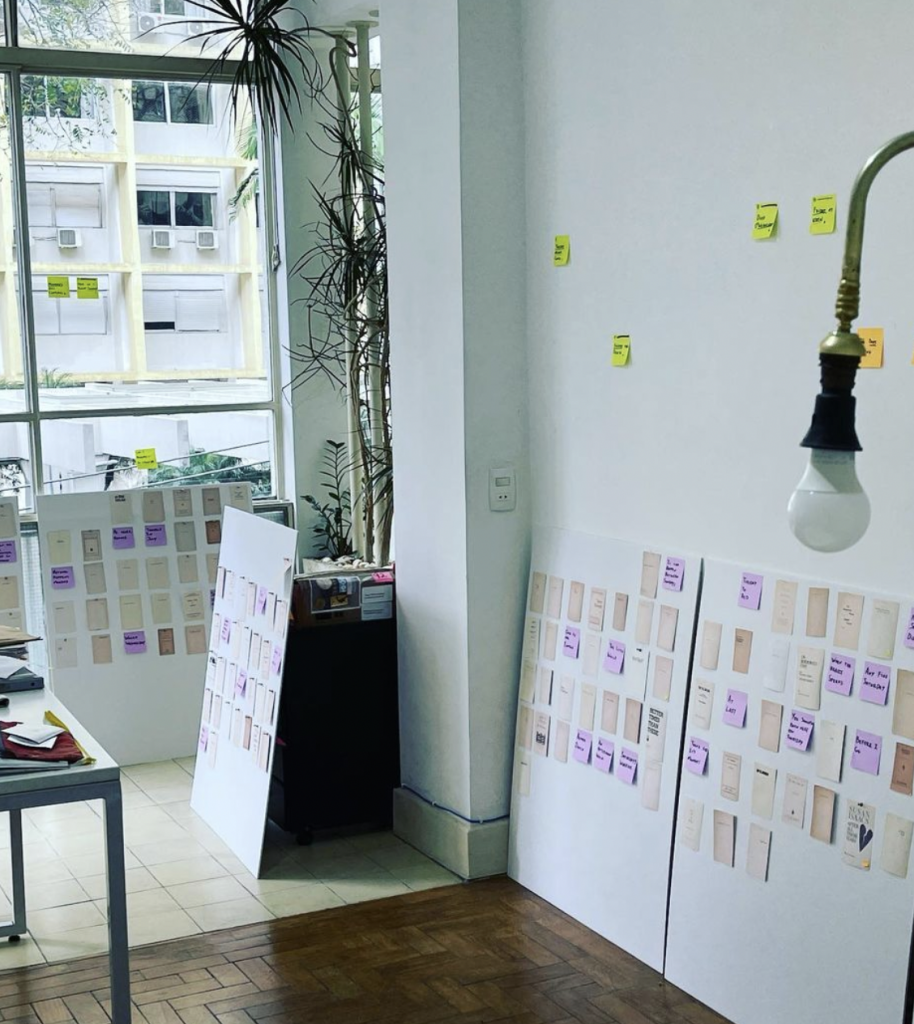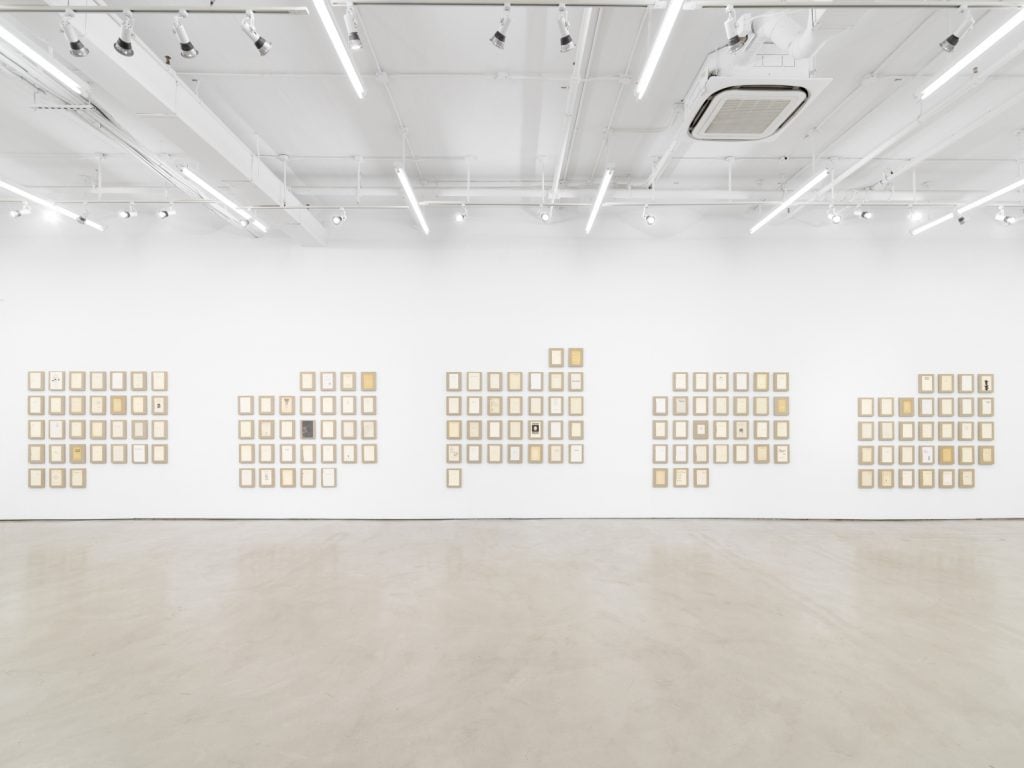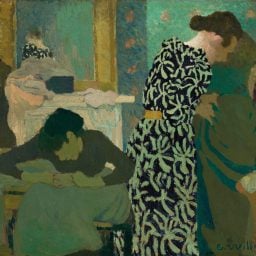After 30 years in New York, artist Valeska Soares made the decision last year to leave her adopted home and return to São Paulo, the city of her youth. The reasoning behind the move was nuanced. Her mother, an accomplished artist herself, was now in her 90s, and the pandemic had heightened a desire for proximity to her family. Plus, living and working in a brownstone split into her studio and home for decades, Soares felt for the first time that perhaps she was getting a bit too comfortable.
The artist, whose works poetically engage minimalist and conceptualist strategies to investigate memory, emotion, and loss, began the task of moving decades-worth of her work and life.
Moving even a few blocks can be a trying undertaking; Soares’s move was of colossal scope, with shipping containers filled with her paints, archives, works in progress. Even amid the move, Soares continued working. In January of this year, she opened the exhibition “Broken Year” at New York’s Alexander Gray Associates, which explored the passage of time during the pandemic.
Amid the studio upheaval, we caught up with Soares in São Paulo, as she was awaiting approval of her studio renovations and preparing work for the upcoming Lyon Biennale.

Courtesy of the studio of Valeska Soares.
You recently moved from New York to Saō Paolo. What has that process been like for your studio?
I’m still adapting. Usually, I do research in the studio and when I have a bigger project, like a sculpture, I do that outside the studio. Right now I’m living amid boxes. I’m renovating the studio. I’ve never lived in a building with a board before—so I didn’t know anything about that process of what they let you do, what they don’t let you do. I think they’re probably freaking out about me a little bit.
What prompted the relocation?
New York is the place I’ve lived the longest in my life. During the pandemic, I was living in this brownstone and I guess I had so much time. Brazil is very complicated, but it’s also easier. I couldn’t deal with the social life in New York anymore, scheduling dinners three months out. What I say is I just moved my bed from one country to another. I’m an American citizen. I’m not exiled.
Maybe it was the pandemic, but I had started to feel comfortable in a strange way. I felt I needed to pull the rug out from under myself. Movement gives a kind of energy to the work; you get into a survival mode and there are new skills you have to learn. I also wanted to play house again. I lived in a beautiful home for 30 years, but I wanted to make something new again.
I got a humongous place here in Saõ Paulo. The brownstone studio was a little constricting. I needed to expand, so I just bought a whole floor of a building here. I’m dividing it so on one side of the building there will be a studio with an independent entrance, and on the other side, my house. It’s exciting to be working with architects. I’m an architect by training. But I forget how complicated renovating a place can be. My brownstone in New York took six years, but I guess that’s what people say about pregnancy, you always forget the pain.
Did you pack everything in your New York studio or did you start over?
You have no idea the madness! I basically packed a brownstone. I left some of my inventory in New York, but I brought my private collection. I filled two 40-foot containers and brought them to Brazil. They’re filled with documents, projects. There was no way to leave it behind—it’s my whole life. I’m in the Twilight Zone right now because everything is packed. Things are all over the place and my assistant is sorting out all the materials, paints, artwork. This is what I mean when I say I like pressure.
What are the most indispensable items in your studio and why?
Myself! The reason is obvious: without me, there is no work. I’m not attached to any particular material items. My work is always changing so it’s not one thing for me. It’s always a new discovery.

Installation view “Valeska Soares: Broken Year” at Alexander Gray Associates, New York (2022).
What kind of atmosphere do you prefer when you work? Do you listen to music or podcasts, or do you prefer silence? Why?
I used to listen to music a lot, but now I prefer pure silence. The world is so noisy with everything going on. Since arriving in São Paulo I hear so much traffic. Plus, there’s TV and everything else we listen to all day long. I prefer silence for the moment, though I might change my mind.
What trait do you most admire in a work of art? What trait do you most despise?
Nothing and nothing, I suppose. There are many traits in a work that could be admired. I am usually taken with a specific artwork not just by certain traits. I don’t despise anything. Sometimes if there are things in a work I don’t like or don’t understand I make an effort because maybe I’m blind to seeing something and try to expand my visual vocabulary. A despicable artwork can be interesting for different reasons.
When you feel stuck in the studio, what do you do to get un-stuck?
There are types of work I try to get lost in. I had a conceptual work where I would just write: killing time, killing time, killing time… so on forever, when I didn’t know what to do. Sometimes, you need to do something else, go read. Other times, you need to do nothing. You need to respect the cycle of work but in my experience the more you work the less you’re stuck. In the past few years, I’ve always had something on my mind.
Who are your favorite artists, curators, or other thinkers right now?
I go through phases. I am inspired by artworks more than artists, but I love the work of Rosemarie Trockel, Mona Hatoum, and Doris Salcedo, who is always brilliant.
If you had to put together a mood board, what would be on it right now?
I’m not a mood board kind of person. I find it strange that artists have mood boards. Fashion designers and interior designers have mood boards. The closest thing for most artists is a collection of tchotchkes that I’ll look at every day and at some point those will be referenced in a work—little things, mementos or ideas that you’ll keep around and that eventually become something.









